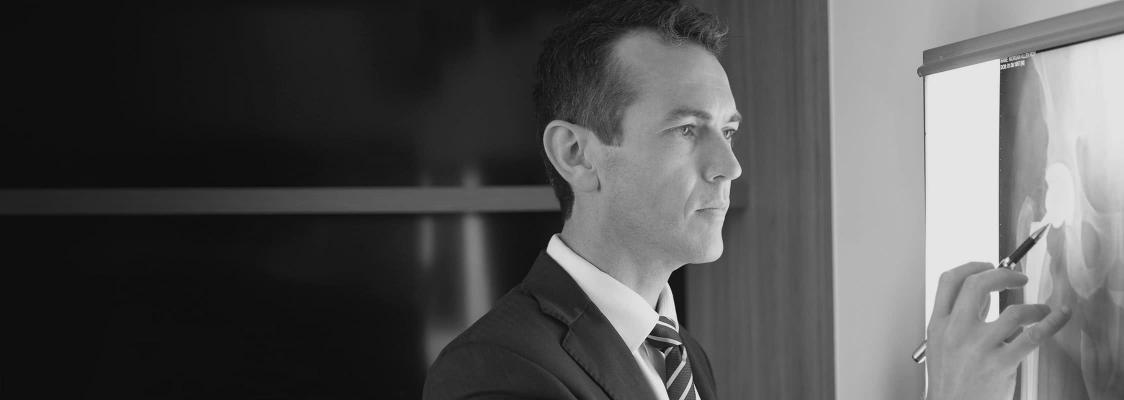Trochanteric Bursitis is a painful condition that can occur around the upper and outer aspect of the hip joint. Trochanteric bursitis is not a condition of the hip joint itself. Rather, it is an inflammatory condition affecting the “point” of the hip at the outside of the top of the thigh.
The bony prominence at the top of the femur bone in this region is called the Trochanter, and the condition is characterised by inflammation of the lubricating sac of tissue (the Bursa) that surrounds this bony prominence.
In addition to bursa inflammation, there is often wear and tear of the tendons of the gluteal muscles (that attach to the bony prominence) – this tearing of the tendons is known by various names: gluteal or abductor tear; gluteal, abductor or insertional tendinopathy or calcific tendinopathy. Tendon tears and bursitis usually co-exist. The tears are often chronic in nature and occur slowly over time. They usually occur in tendon tissue that has become weak or “threadbare” over a prolonged period.
The most common complaint associated with trochanteric bursitis/ abductor tear is of pain at the point of the hip that can radiate down the outer aspect of the thigh. Pain is provoked by pressure over the trochanter region – people often complain that sleeping on the affected side is particularly painful. Palpation in the region also causes pain.
For most people, non-operative treatments are successful in managing the condition. This often includes physiotherapy to strengthen the remaining muscle and tendon, stretching of the tissues on the outer aspect of the hip and injections (cortisone and anaesthetic or platelet rich plasma) to the bursa and tendon tear region. Occasionally the condition requires surgical intervention however the outcomes from surgery are n
